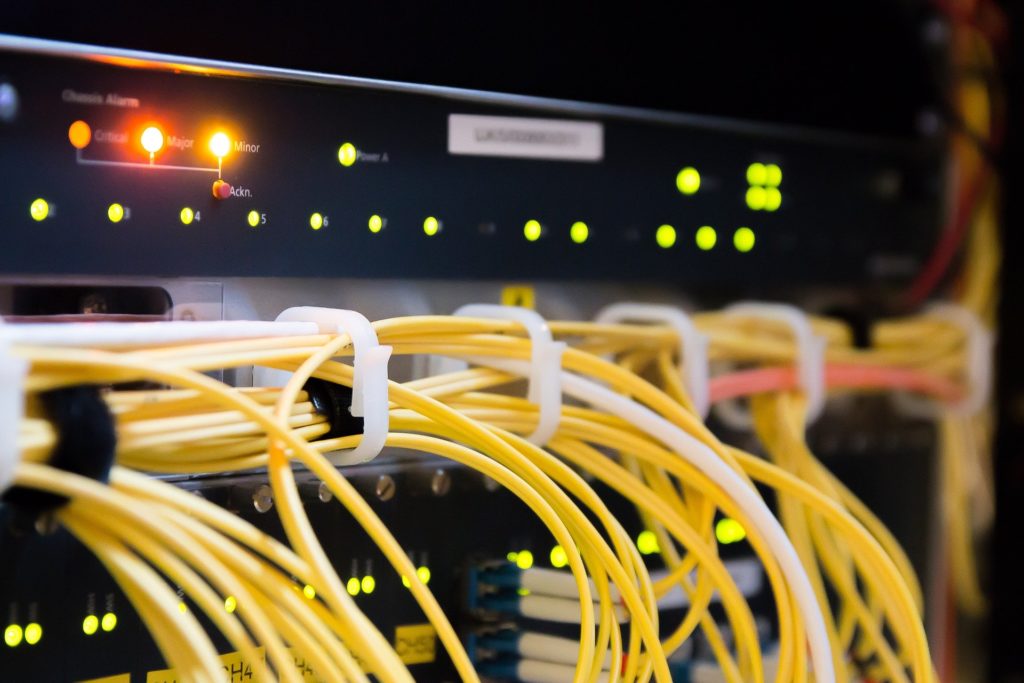Scheduling a Network Upgrade? Here’s How to Get Started.
Leave a Comment
Businesses in the midst of growth must grow their networks and IT infrastructure. Most small and mid-sized businesses (SMBs) frequently increase their IT-related spending as they encounter growth regularly and often.
These SMBs need such upgrades to keep up with the growth of their businesses. Larger organizations also need network upgrades to advance their IT efficiency and equip the latest technology in their systems.
While the need for a network upgrade is clearly obvious, the process for implementing the upgrade must be carefully handled to ensure a successful operation with minimum disruption.
Why a Network Upgrade?
Businesses need to add value to their operations in order to meet the constantly evolving needs of customers. Thus, when a business’s operations exceed its current network capacity, the business can experience frequent downtimes or breaches.
As a result, the business could be exposed to more risks that lead to financial losses, poor public relations or even halting operations. Larger organizations expanding their networks when entering new locations in the international markets, or during mergers and acquisitions also need critical network upgrades.
Growing businesses will require more employees to keep up with increased activities. Further, the volume of communication with customers, suppliers, and departments in the business environment will increase.
Handling the additional operations requires an upgrade for both IT in general and the network infrastructure. Thus, businesses are most likely to implement network upgrades as they grow.
Since operations are ongoing in the business, the upgrades must be carefully scheduled to ensure minimal disruption to normal operations.
What to Know Before a Network Upgrade
Before upgrading your network, the process must be planned. This phase allows you to identify the current and future needs of the network. From these needs, your IT personnel will identify the gaps existing in your current network.
Based on the gaps, the IT team can model a new network design that meets the current and projected needs of the network.
Businesses experiencing rapid growth find it planning a network upgrade more complicated, compared to businesses with stable growth as the latter can project their future network needs more accurately.
Information Gathering

During the initial stages of planning a network upgrade, the team gathers information on the current state of the network infrastructure. The data collected can further be analyzed to predict future network demands.
Collect the current number of users of the network and based on the expected business growth, project the number of future users. Also note the existing network infrastructure and its layout, security applications, wireless connections, and internet connectivity.
You must identify future demands from the projects growth. Otherwise, without considering these future demands, your business will have to undertake several closely packed network upgrades that will be costly to its operation.
The projections help the team to identify new services that may be required to serve future business demands. Thus, the upgrades account for the projected growth and allow ample time before another upgrade has to be implemented.
Also critical to this stage of planning is determining the current budget for the upgrade.
Network Design
The information gathered from the preceding stage will be essential in this design stage. The most effective network design will solve current and future network demands while staying within the budget.
The IT team must analyze the collected information to identify and classify current network issues and the current state of the network infrastructure. The team then further identifies access points in the network infrastructure which are overstressed with higher traffic.
These points are marked and prioritized during a network upgrade. Such assessments will also ease the process of designing the upgrade.
During the network design stage, the IT team develops several designs from which the most efficient and cost-effective design based on tests is selected.
Since network upgrades are likely to disrupt normal operations of your business, the design team should incorporate features that will minimize network disruptions during the upgrade whenever possible.
Implementation
Implementing a network upgrade is a delicate process for your business. With the correct information and good network design to meet the demands of the upgrade, implementing the new network will require the team to develop channels that integrate the new network almost seamlessly.
Also, to minimize risks of disruption, it is essential to back up all sensitive data securely and allow ample time for implementing the network. The team should also introduce a fallback plan in case unexpected events occur during implementation.
All network users must be informed of the network implementation before the process. Based on the analysis of traffic accessing the network, the design team should opt for a time when the least traffic is recorded.
This ensures that very few customers are affected by the downtimes and that other network users will also experience little disruption. One way to implement the network upgrade is by deploying subnets that split the network into multiple access points.
Thus, the upgrade can be implemented progressively on various subnets, letting some subnets run as others undergo the upgrade. Creating subnets will also allow you to increase security on channels with highly sensitive data.
Operation and Evaluation

During the operation phase, it is essential to conduct a review of the efficiency of the upgrade.
During this, the team evaluates the network’s efficiency against the proposed functionality of the new network infrastructure.
While in the operation stage, you should also ensure all network users are provided with information regarding the network changes, including any altered functionalities at access points.
Expect to retrain personnel and other users on the upgrade to enhance personnel productivity and overall efficiency of the network.
The review of the operation phase helps your team to determine the user experience on the new platform and enables them to resolve errors quickly.
Whether your network is managed by an internal IT department or a managed service provider (MSP), the evaluation of the network operation should involve physically present technicians monitoring any breakdowns and resolving issues as soon as they arise.
What to Consider During a Network Upgrade
Now you are aware of the phases of a scheduled network upgrade, one essential factor to consider in the process is to always allow room for future growth.
It is almost impossible to design an upgrade that will last for the entire lifetime of the business. Gradual network upgrades approximately every four years are less costly for a growing business.
Also, consider aligning your upgrades with the business’s long-term goals, and time your upgrades for the appropriate season when the network experiences little traffic.
You should also consider sustainably upgrading your network, limiting the strain on financial resources available.
Summary
The advancing nature of cyberspace brings new and improved solutions to speed up digitized operations.
Businesses looking to benefit from the improvements are bound to upgrade their networks, not only to improve their operations but also access the latest security features to protect against evolving cyber attacks.
Upgrading your network to introduce the latest network features also serves to improve your customer relations by keeping your customers in touch with the latest technological experience.
However, the upgrade is no easy task; the process must be well planned to ensure simplicity in implementation. With a good plan, a business can conduct an upgrade that fits the planned budget and meets both current and projected network demands.
If you’re looking to upgrade your network, we’d love to help. Contact us today as we’re New Jersey’s top IT support company.



